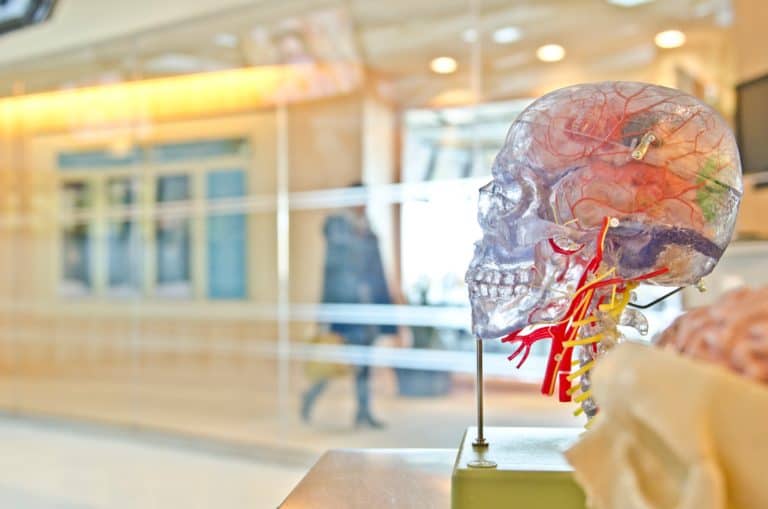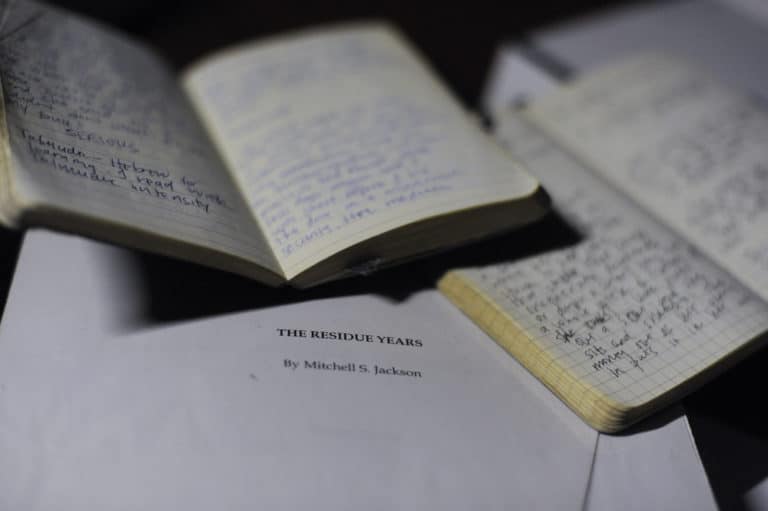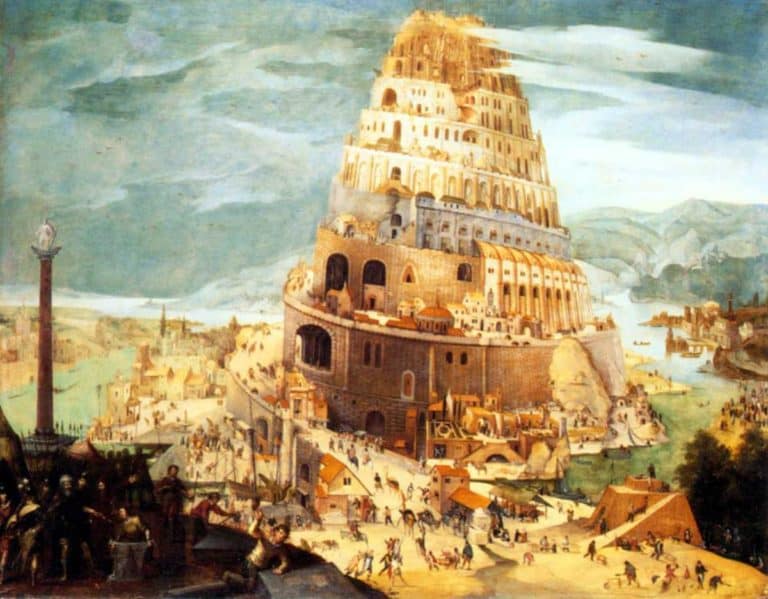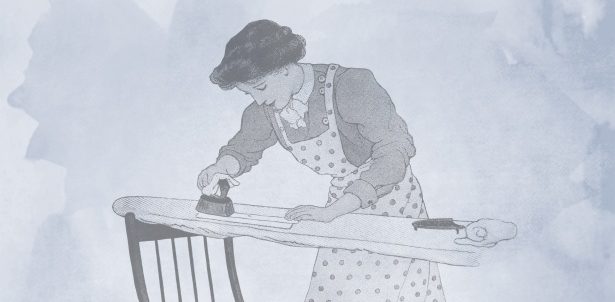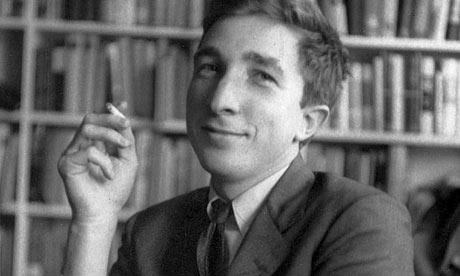"Magic is the crown or nightmare of the law of cause and effect, not its contradiction. Miracles are no less strange in this universe than in that of astronomers. It is ruled by all of the laws of nature as well as those of imagination.” —Jorge Luis Borges
Saleem Sinai, the narrator of Salman Rushdie’s 1981 novel, Midnight’s Children, is born at exactly midnight on the 15th of August, 1947, the precise moment of India’s independence. He is, he tells us, “mysteriously handcuffed to history” (3) and his life’s turns are eerily linked to those of his newborn nation.
The novel, which won the Booker Prize and then later the “Best of the Booker,” has become a classic of 20th century literature. It is heralded as a work of “magic realism,” a style of writing where supernatural phenomena occur in an otherwise realistic mode of storytelling, or as Saleem describes his tale, “a commingling of the improbable and the mundane.” (4)
But what counts as improbable? What constitutes “magic?” How do our reading brains distinguish between the real and the not-so-real? And how is the distinction made in the mind of the writer?
A few examples of magic found in Midnight’s Children are: a mother who can see her daughter’s dreams, a basket of invisibility in which the narrator hides for a long time, and a man who can give people erections by humming. These are all things that, I think, we can say are more than improbable, they are scientifically impossible—though we can readily suspend our disbelief for the sake of good storytelling.
Other enchantments in Rushdie’s novel play on cultural myths, such as the Hindu seer who shares prophesies while floating six inches off the ground. I’d judge that as impossible, though I know at least one person who claims to have seen someone levitate during meditation, just as I know more than one person who vouches for the accuracy of their visits with psychic mediums. Real or magic?
At times the magic in Midnight’s Children would seem to have sprung purely from the wilds of Rushdie’s own imagination. One of the novel’s central conceits, for instance, is that the narrator, Saleem, has a kind of telepathic power, whereby he can communicate with the thousand other children born in that same midnight hour of India’s independence.
When I first read the novel almost twenty years ago, I thought of Saleem’s link to the other children of midnight to be a bold, fantastical element in the story. But today, when I read the novel I see an eerie prescience in Rushdie’s magic to some recent scientific discoveries, and it no longer seems so magical.
The creative arts sometimes pick up on truths before science has a full explanation. Marcel Proust intuited the ways in which memories form and link in our brains eighty years before the invention of functional magnetic resonance imaging and the emergence of modern neuroscience. Similarly, the developing science of epigenetics exposes the possibility that some of Rushdie’s magic might have a basis in reality.
Experts in the field of epigenetics look at changes in living organisms through modified gene expression, as opposed to genetic alteration. Once it was believed that a child’s DNA was a product of their parents’ DNA and nothing more, but today’s science has tracked numerous ways in which other factors can alter gene expression, without altering the DNA itself, and the impact that has on offspring.
The research being done in epigenetics has expanded our understanding of the ways that external events around a pregnant mother can impact the health of a fetus at various stages of development, in some ways not entirely unlike what happens to Saleem in Midnight’s Children. The idea that an external event such as the independence of India could have a direct impact on a baby born at that moment—an entire population of babies born at that moment—is no longer improbable at all.
Curt Sandman, a professor of psychiatry at UC Irvine, was studying a large group of pregnant women to determine how their psychological health was connected to their birth outcomes in 1994. During the study, the Los Angeles area was hit by a 6.8 magnitude earthquake, killing fifty-seven people and injuring almost twelve thousand more.
Sandman examined the effects of the earthquake on the pregnancies of forty women in his study. Because he had detailed records of their psychological health prior to the event, he was able to see the relative impact on each of the affected mothers.
He found that women in their first trimester at the time of the earthquake delivered an average of two weeks before their due dates, which was double the frequency of early birth for women in their third trimester at the same moment.
There was a direct connection between the likelihood of pre-term birth and how far along in the pregnancy the women were at the exact moment the earthquake occurred. The result being that a notable population of children, born in geographic proximity, within a particular timeframe, each had been affected by a common external cause.
Other studies showed comparable results for babies born in the aftermath of Hurricane Katrina or 9/11. The more stressful the mother’s experiences during the crisis, the more likely it was that her baby would be born with low birth weight. Today these revelations are helping to change public health policies after large natural disasters or terrorist attacks, to provide help to mothers who have experienced elevated levels of stress.
Of course, all this stress didn’t lead to the endowment of psychic powers, but researchers did find that stress from external disruptions could affect developing brains in key ways.
A study of children in utero during a 1998 ice storm in Canada was later shown to have had a clear impact on the cognitive and language skills of those children after birth. There were impacts on attention and behavior, and an average of ten to twenty points lowered IQ. After five to ten years these effects were still found to be significant.
The best explanation for this impact comes from the mechanisms behind stress itself. Restricted blood vessels carry less oxygen and nutrients to the fetus. Higher levels of cortisol, a steroid hormone released when the body is severely stressed, have been shown to impact birthweight and gestation length.
In the case of Midnight’s Children and Saleem Sinai, the moment of India’s independence corresponds not to a crucial period in his gestational development, but to his actual birth—a point where he would be less affected by his mother’s hormones, although there are studies that suggest cortisol is shared post-partum via breastmilk.
Saleem’s telepathic powers are granted not by some major catastrophe producing extreme stress, but by the independence of India, something quite joyful and triumphant, which might even have produced endorphins that reduce cortisol levels….
I don’t mean to contend that the magic in Rushdie’s novel can be literally explained by science. Rather, I’d assert that the broader idea behind Saleem’s gifts—that global events can statistically affect the neurology of children born afterwards—turns out to have a firm scientific basis.
How is it that a creative mind can use magic to expose things that are more real than it knows?
If Midnight’s Children was published in 1981, at least a decade before these studies were done, then is this all just a coincidence? Perhaps Rushdie’s magic just happened to be more probable than he believed at the time. Or perhaps he had some artistic intuition about the ways that a major event impacts an emerging generation, just as Proust had some intuition about the ways that memories are stored and linked, which later were backed up by science.
I tend to think it must have been the latter. Artists and writers are often keen observers of the world around them, and particularly of the nature of people and societies. Rushdie was closely attuned to the myths and legends of India’s many cultures, in which plagues, famines, and wars bring forth great heroes. And in the world he, and others before him, would have long been able to notice certain patterns for themselves, a correlation between children born in the months after a major conflict or a time of stress, for instance. Epigenetics has provided a scientific explanation for what societies have likely already understood on some level for a long time.
In her book Origins, journalist Annie Murphy Paul refers to an event known as the Winter War, that took place in November of 1939. Near the start of World War II, Soviet soldiers invaded Finland, only to become stuck in subzero temperatures. The stress on the Finnish soldiers, and on their families, was understandably much greater than usual during this time, and after three and a half months of brutal fighting, 25,000 Finnish soldiers were killed.
A later study by Matti Huttunen and Pekka Niskanen at the University of Helsinki looked at the records of the slain soldier’s children. They compared the records of 167 children who were still in the womb at the time of the Winter War, to the records of 168 children who were already in the first year of their lives when their fathers died. The first group had remarkably higher rates of schizophrenia and other behavioral disorders than the children born just before the fighting began. It was decades later that the data was analyzed officially, but for a generation of Finnish mothers, it was simply reality.
Another study of Israeli women who were pregnant during the 1967 Arab-Israeli Six Day War found that female fetuses who were in their second month of development during the war were 4.3 times more likely to develop schizophrenia, while males were 1.2 times as likely. Researchers speculated that stress hormones like cortisol must have had some impact on their neurological development.
After these wars, these communities may have noticed the prevalence of premature births and the subsequent neurological effects on a generation of children. Societies affected by extreme weather or violence could, over time, develop a sense of these patterns—patterns which influence the same local myths and superstitions that writers weave into magical realism.
Just as there is a link between external traumas and children born afterwards, there is a link between places where such traumas occur frequently and its artists’ uses of “magical realism” to describe life.
Literary critic Michiko Kakutani had this observation in a 1989 article on Rushdie:
It is no coincidence that magic realism—which combines heightened language with elements of the surreal—has tended to flourish in troubled areas of the world, or that many of its practitioners have sought to describe calamitous events that exceed the grasp of normal description. The transactions between the extraordinary and the mundane that occur in so much Latin American fiction are not merely a literary technique, but also a mirror of a reality in which the fantastic is frequently part of everyday life—a reality in which military death squads have effectively turned the word ‘disappear’ into a transitive verb.
Rushdie himself has insisted that there is more truth behind the magic in his novels than one might expect. “The fable, the surreal story, is just another way of getting at the truth, and if it has good, deep roots in the real—the ‘realism’ part of magic realism—then it can intensify a reader’s experience of truth, crystallize it in to words and images that stay with one. That’s the appeal.”
If it seems somewhat far-fetched that something akin to Rushdie’s Midnight’s Children might really be happening in our world all the time, it may be because the science of epigenetics is relatively new and yet unfamiliar to us. But for a moment consider the ease with which we accept the reality of something for which we’ve now long understood the science.
Before Saleem Sinai begins to ascribe his telepathy to the timing of his birth, he grapples with a form of inheritance familiar to us in the 20th century. Saleem’s nose is abnormally large, and he has some sensory gifts because of this, often noting the smells of things in his narration. It is a family heirloom, a genetic albatross, which he dates back over several generations. Saleem follows the nose through his family tree, noting its characteristics for each:
On Aadam Aziz, the nose assumed a patriarchal aspect. On my mother, it looked noble and a little long-suffering; on my aunt Emerald, snobbish; on my aunt Alia, intellectual; on my uncle Hanif it was the organ of unsuccessful genius; my uncle Mustapha made it a second-rater’s snuffer; the Brass Monkey escaped it completely; but on me—on me, it was something else again. But I mustn’t reveal all my secrets at once. (8-9)
A few centuries ago, a family tree full of large noses might have seemed like a kind of legend or magic. A curse, perhaps, or an endowment to be superstitious about. Now, thanks to Charles Darwin, we think little of it.
And even long before Darwin, people bred animals like dogs and horses for preferable traits, and had, through observation and study, come to understand that vegetables and plant life could be hybridized and cross-pollinated. It worked, even if they didn’t understand exactly how. Today we can take samples of our DNA with a home test kit and find out more about our ancestry, and it barely feels magical at all. After a few decades of further research into epigenetics, we may even find stories like the ones Paul records in Origins to be mundane.
But great writers know how to make the mundane feel magical again for us, and to help us recall what things were like before we knew everything.
The eminent science fiction writer Ursula K. LeGuin wrote in an essay, “Myth and Archetype in Science Fiction,” that often a myth is described as, “an attempt to explain, in rational terms, facts not yet rationally understood.” This, she argues, is only half the truth, by which it would seem to follow that, “the god Apollo ‘is merely’ an inadequate effort made by primitive minds to explain and systematize the nature and behavior of the Sun.” However, she reminds us, that yes, “we are rational beings, but we are also sensual, emotional, appetitive, ethical beings, driven by needs and reaching out for satisfactions which the intellect alone cannot provide[…] Apollo is not the Sun, and never was. The Sun, in fact, ‘is merely’ one of the names of Apollo.”
It is telling that there has been a debate over the meaning of the term “magical realism” almost since its inception. The term was coined by German art critic, Franz Roh, in 1925 as a way of describing a new style of surrealist art wherein a hyper-realistic treatment of plain, everyday objects in paintings revealed a kind of hidden, inner magic to that object.
He later wrote that he specifically did not intend the phrase to refer to art that incorporated fantastical or unreal elements, but the phrase still became influential with writers, particularly from Latin America, in the 1920s and 1930s, like Alejo Carpentier, who tried to re-coin the term as “marvelous realism” to describe a way of telling stories about the ordinary role of magic, myth, and superstition in daily events.
But are these two interpretations of the phrase so different? Does it matter if the magic is within, or without?
Gabriel García Márquez, perhaps the 20th century’s most famous “magical realist,” often made the case that elements of his work, including things like ghosts, oracular dreams, and flying carpets, were not even magical, to his mind.
In a 1977 interview with The Atlantic, Márquez described how his view of reality might differ from that of Faulkner’s, who he considered an influence, but who he thought sometimes imposed a faux surrealism on events in his stories and novels. “In Mexico, surrealism runs through the streets. Surrealism comes from the reality of Latin America.”
He then provided two stories to illustrate his point. The first involved a mysterious occurrence in his native Colombia. Two men had arrived with a moving van outside a small rural school, saying that they’d been sent to collect the furniture. Nobody at the school knew who they were, or had asked for anyone to come take away the furniture, and yet they helped load up every desk and chair and sent the burglars on their way.
“Normal,” says Márquez to the interviewer. This is just life in Colombia. And certainly odd things occur in other places too. He continued:
One day in Barcelona […] my wife and I were asleep and the doorbell rings. I open the door and a man says to me, “I came to fix the ironing cord.” My wife, from the bed, says, “We don’t have anything wrong with the iron here.” The man asks, “Is this apartment two?” “No,” I say, “upstairs.” Later, my wife went to the iron and plugged it in and it burned up. This was a reversal. The man came before we knew it had to be fixed. This type of thing happens all the time. My wife has already forgotten it.
It is a marvelous story, and one can easily imagine it seeming stranger than fiction in a novel, even completely improbable, but as Marquez reminds us, unexplained coincidences are just part of real life. These things happen all the time. We wonder at them; we move on with our lives.
We navigate the world of magical thinking every day.
Modern science shows that magical thinking, or the attribution of a false causal relationship between actions and events, is common even among well-educated people who consider themselves to be rational. Researchers believe that the ability emerges first when we are young children, as we seek ways of understanding the world around us before we have much knowledge of how it “really” works. It is a way of testing our hypotheses about the laws of nature and causation.
If my son, age four, puts on a red shirt, he may think he’ll get ice cream later, because last time he wore that shirt we got ice cream.
No.
If he cleans his books up off the floor, he may think he’ll get ice cream later, because last time he cleaned up his books we got ice cream.
Yes.
Apparently, by the age of eight, we have about as rational a view of the world as we will as adults.
Which is to say, a not always very rational one.
For supposedly rational adults frequently engage in superstitious behaviors, like wearing a special jersey when they want their team to win, or rubbing a rabbit’s foot for luck, or seeing a psychic for sometimes hundreds of dollars per hour. Often we do these things despite acknowledging they aren’t rational at all.
We crack open fortune cookies, we check our horoscopes, we toss salt over our shoulders… it’s magic, and it’s mundane. It’s largely harmless, of course, and also usually semi-private, which is one reason that we may have a poor understanding of how many people, and how frequently, turn to things outside of rationality and logic that we believe can influence our reality in some way.
A study done by professors at Harvard and Princeton paired up two well-educated subjects and blindfolded one of them. They asked this person to try and shoot a basketball into a hoop without use of their eyes. They asked the second person to visualize the blindfolded partner making the shots. After a successful shot, researchers asked the second person if they believed their visualization helped the person make the basket or not. Most people believed that their visualization probably did help.
What they did not know was that the blindfold was see-through and that the person throwing the basketball was in on the experiment.
But in the presence of something seemingly illogical, like a blindfolded person making a series of baskets, rational adults turned to the irrational quite easily.
In a 2007 New York Times article, science writer Benedict Carey described recent research in the field. A group of fans, after watching their team lose the 2005 Super Bowl, said in a survey that they felt in some way responsible for the loss, while the fans of the winning team asserted that their faith and support had some impact on the win.
We may be more familiar with these kinds of superstitions than, say, levitating prophets or telepaths or baskets of invisibility, but they are no more rational on their face. Good writers and good scientists know that creativity is not a rational process—as do readers. When we “suspend our disbelief” while absorbed in a novel where magical things happen, we’re engaging in the same kinds of neurological process as the guy visualizing baskets being made. We allow ourselves to believe in something that rationally we should not accept.
Magical thinking like this turns out to have a neurological basis, and researchers believe it persists evolutionarily because superstitions actually do give some real advantages to people who believe.
Carey elaborates that, “the appetite for such beliefs appears to be rooted in the circuitry of the brain, and for good reason. The sense of having special powers buoys people in threatening situations, and helps soothe everyday fears and ward off mental distress. […] This emerging portrait of magical thinking helps explain why people who fashion themselves skeptics cling to odd rituals that seem to make no sense.”
According to University Professor Jean Risen, in her paper, “Believing What We Don’t Believe: Acquiescence to Superstitious Beliefs and Other Powerful Intuitions,” our brains process an irrational thought in one part of the brain but correct the error in another part. Because these processes are completely separate, she says, it is possible for us to “acquiesce” to irrational observations and accept them without making any kind of correction.
Imaging done in one University of Exeter study showed how different parts of the brain lit up while the subject watched a magic trick involving a disappearing coin, indicating that subjects could accept a particular pattern of “coin, then no coin” without processing the error that a rational law had been violated.
Scientists believe that magical thinking may have an evolutionary advantage. People who take a test with a lucky charm did better on a memory test than those who were asked to leave their charm outside before the test began. Athletes who performed a familiar ritual before a game were more likely to play well in that game than if they had been prevented from doing the ritual.
This effect boils down to a kind of confidence trick, of course—if we do the “lucky” thing then we believe in our abilities more than if we know we did not do the thing we believe to be lucky. Studies have shown that athletes who are prone to superstition may also be better at recognizing patterns generally, which is itself an advantageous thing for an athlete.
And I’d contend that it is clearly also an advantageous thing for a writer like Salman Rushdie to recognize patterns, and to be able to draw correlations between things that are not apparently rational. What is a metaphor, on some level, if not the connecting of two seemingly unrelated ideas, to create a fresh image? When a character bowing in prayer in Midnight’s Children hits his head and gets a nosebleed, Rushdie describes his drops of blood as “rubies” and his tears turning into “diamonds.”
Coin, no coin.
And step back a little more. In his introduction to Midnight’s Children, Rushdie describes his life as a young author, working full-time in advertising and scrambling to write in the morning and evening hours every day, under immense pressure and often exhaustion, but believing it would result in something worthwhile.
What is setting out to write a book if not a kind of magical thinking? Surely it’s not an endeavor for realists.
Interestingly, neuroscientists note that magical thinking, just like magical realism, is more prevalent in times and places where great violence or stress is at work because it provides a sense of order and control.
Giora Keinan of Tel Aviv University studied 174 Israelis after missile attacks in 1991. The higher their reported stress, the more likely they were to have magical beliefs like, “I have the feeling that the chances of being hit during a missile attack are greater if a person whose house was attacked is present in the sealed room,” or “to be on the safe side, it is best to step into the sealed room right foot first.”
This is precisely what Michiko Kakutani, and Rushdie, and Márquez remind us of in their remarks on magical realism. When things stop making sense to us, we make them make sense—by magic if we must. It is the job of the scientist, and of the writer. And it is under these conditions, when we are observant and recognizing patterns, but also keeping our minds open and irrational, that we will discover the truth.
❦❦❦
Rushdie, Salman. Midnight’s Children. Random House. New York, NY. 1981.
Paul, Annie Murphy. Origins: How the Nine Months Before Birth Shape the Rest of Our Lives. Free Press. New York, NY. 2010.
Huttunen, Matti and Niskanen, Pekkaa. “Prenatal Loss of Father and Psychiatric Disorders.” Archives of General Psychiatry, Vol. 35, No. 4. 1978.
LeGuin, Ursula K. The Language of the Night: Essays on Fantasy and Science Fiction. Ed. Susan Wood. New York. G.P. Putnam’s Sons. 1979.




